Bought a pineapple and not sure where you should store it or how long it keeps for? If so, you’re probably asking yourself: how to store a pineapple and how long does it last?
Pineapples don’t keep well despite their firm skin and sturdy looks. Fortunately, storing them or telling if yours is spoiled or not isn’t rocket science.
In this article, I gathered everything you need to know about pineapples as someone who enjoys them from time to time. After reading it, you will learn:
- how to store pineapples and when you need to refrigerate them
- how long they keep for in storage (hint: it’s only a couple of days)
- if the pineapple in your hand is spoiled or not
- how to choose pineapples in the supermarket, so when you’re purchasing them next time, you get the best bang for your buck
Sounds interesting? Let’s get into details.

How To Store a Pineapple
Store pineapples on the counter if they’re fresh and you’re going to eat them in a day or two. Otherwise, keep them in a perforated bag in the crisper drawer, or cut them up and transfer into airtight containers.
Pineapples retain quality best at a temperature around 45-50°F (or 7-10°C) ([UCD]), which is slightly warmer than in your fridge.
Unfortunately, prolonged storage at a lower temp might result in chilling injury ([UCD]). Because of that, it’s best to let them sit on the counter if you’re going to consume them in a day or two.
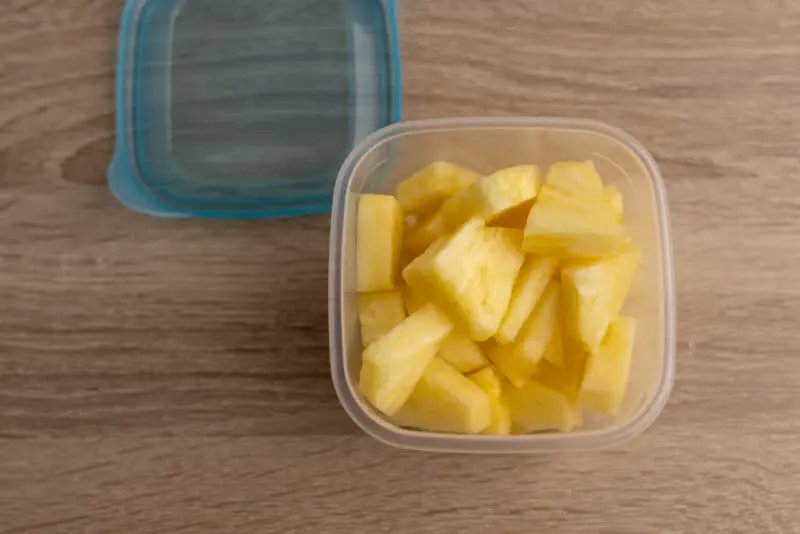
If you need them to last a few days longer, the fridge is the way to go. There are two ways to go about that:
- Store the fruit whole in a perforated bag. The bag helps retain moisture, but also allows the pineapple to breathe. The only issue is that a whole pineapple with a large crown takes a third of the veggie drawer or shelf.
- Cut the pineapple up, and store the cubes or slices in an airtight container. That requires a bit of effort upfront, but you will do this at some point anyway. Plus, the pineapple is ready for eating whenever needed.
If you store pineapple slices, there will be some water in the container after a day or two of storage. That’s normal and nothing to be concerned with.
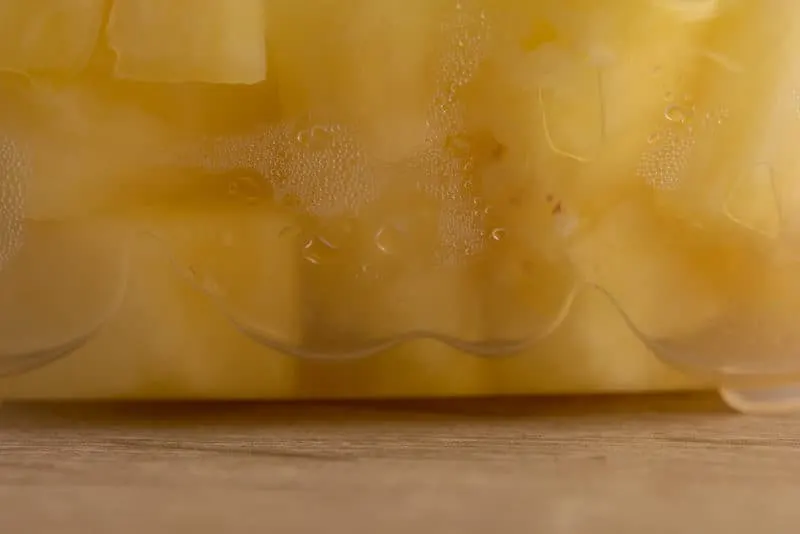
When it comes to canned pineapples, keep the can in a cool and dark place (e.g., in the pantry). Once you open the can, treat the leftovers the same way you treat sliced pineapple.
How Long Does a Pineapple Last
Fresh pineapple keeps quality for 1 to 2 days on the counter and up to 5 days in the fridge. Once you cut it up, consume the leftovers within 5 days.
As usual, the better the quality of the fruit, the longer it’ll last. And since pineapples don’t last that long, it makes sense to take an extra minute or two in the grocery store to choose the best one available.
Here’s what to look for:
- the fruit should be golden brown and the leaves green and (relatively) fresh-looking
- the skin should be quite firm and only give in slightly under gentle pressure; if it gives more than that, the fruit is probably starting to spoil
- the pineapple should have a sweet aroma – it’s no good if it starts to smell fermented
- the bottom shouldn’t be moldy, but it’s usually okay if there’s a small fuzzy area there
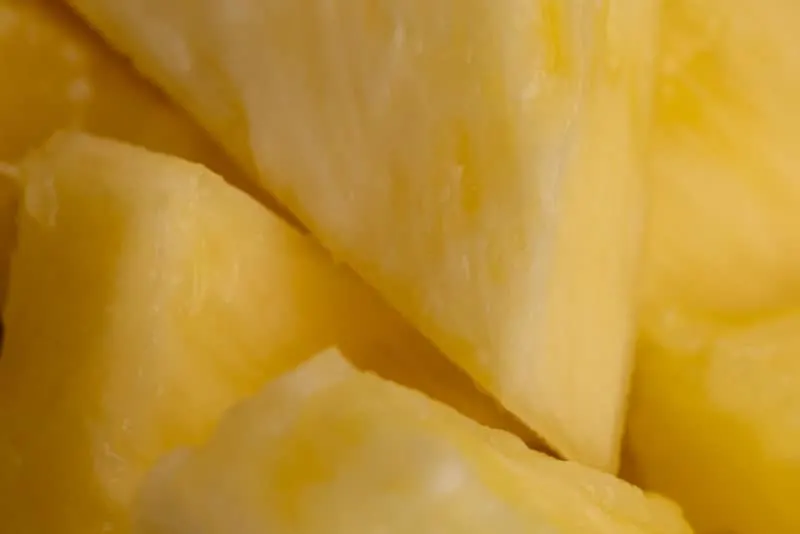
Furthermore, pineapples are harvested when ready to eat and don’t continue to ripen post-harvest ([UCD]). If the one you’re examining is green, it might not be ripe and probably isn’t a good choice.
If you snatched a fresh and fragrant pineapple, it might keep for a couple of days longer. But if you’ve bought yours on a sale and it looks a bit dry and wrinkly, it’s best to cut it up right away to avoid further decay. It won’t last more than a day in decent quality anyway.
When it comes to canned pineapples, they keep for months past their date and once you open up one of them, the leftovers last about 3 to 4 days.
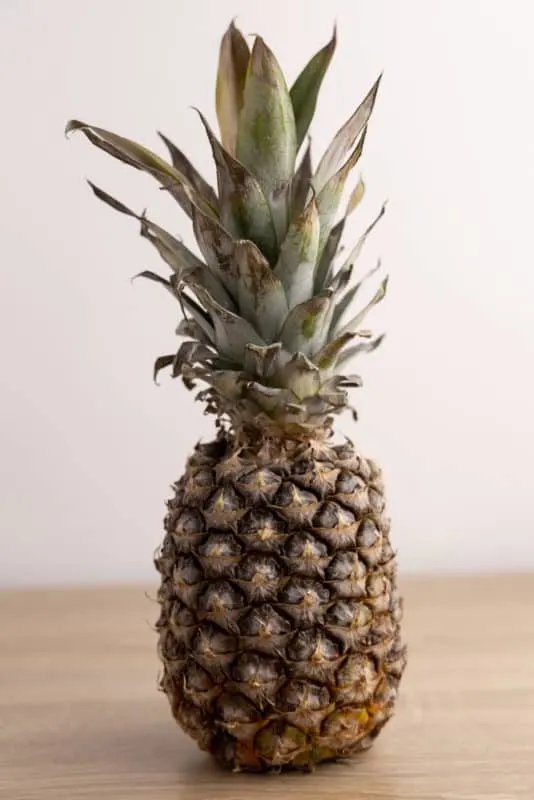
How To Tell If a Pineapple Is Bad?
Throw out pineapples that:
- Are soft. If the fruit feels light and soft to the touch, it’s no good.
- Are moldy or heavily damaged on the outside. Please note that a bit of fuzz on the bottom is quite common, and until you cut up the fruit, you don’t know if that’s a problem or not.
- Smell fermented. If the whole thing smells off, it’s time to let it go.
If neither is the case, you need to cut up the pineapple to see if and how much of it is edible.
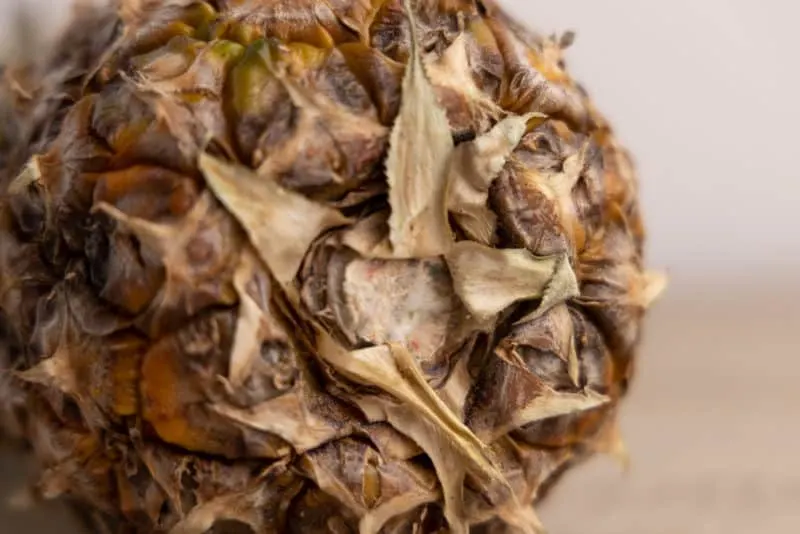
After cutting off the crown and the bottom, and trimming the skin, there are a couple of scenarios:
- The flesh is yellow and fresh. Congratulations, feel free to eat the fruit.
- There are some brown spots under the skin. If that’s the case, you can trim them off if they’re small and don’t go deep. Otherwise, discard the pineapple.
- There’s some mold near the crown or the bottom. Cut the fruit in half lengthwise, and see how deep the mold goes. If there’s only a small area, cut it off (with some safety margin), and enjoy the rest. Or play it safe and throw out the whole thing.
- Some discolored areas smell fermented. Like with mold, it’s up to you to discard the fruit or cut off the bad parts and enjoy the rest.
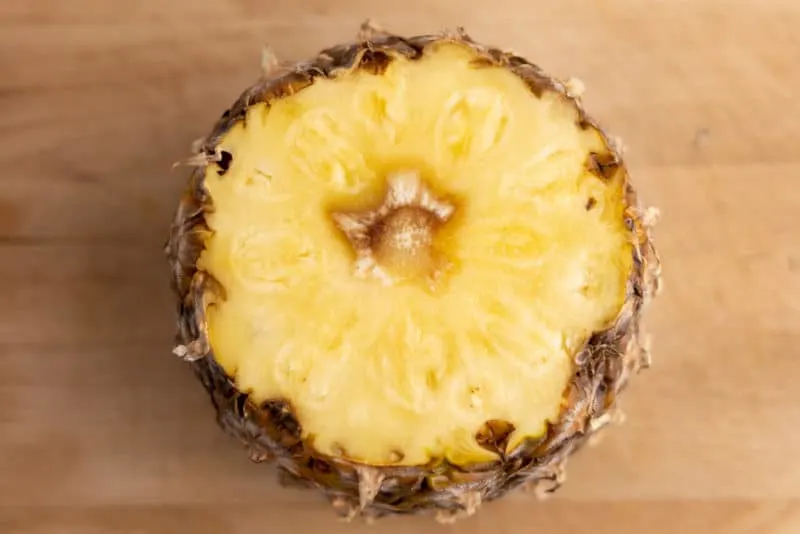
A pineapple that sat in storage for more than a couple of days will most likely have at least one of the issues described above.
If you don’t feel comfortable removing the bad parts, or things have gone too far when it comes to spoilage, throw out the pineapple. Forcing yourself to eat it, and risking foodborne illness as a result, doesn’t make any sense.
Don’t feel bad about throwing out that old and spoiled pineapple. Instead, make a better plan next time. Pineapples don’t last long, so buying them without a clear intention of eating soon rarely works.
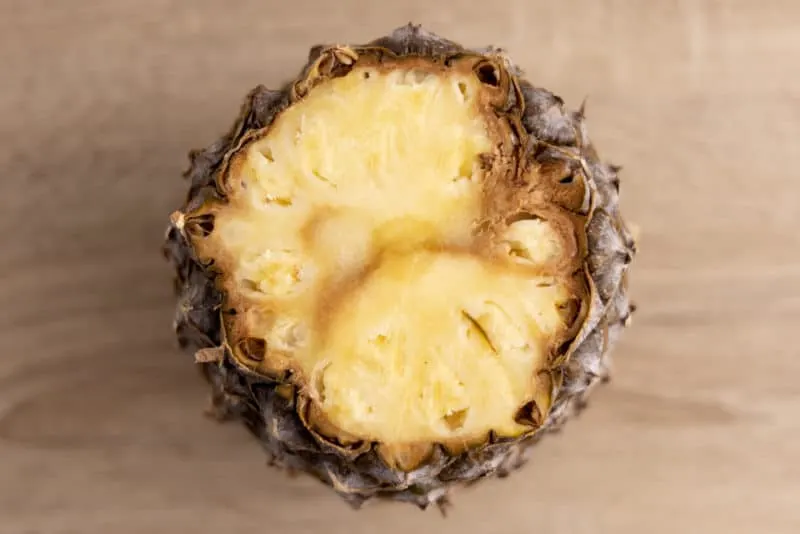
Summary
- Whole pineapples keep for a day or two on the counter and up to 5 days in the fridge.
- Sliced pineapples last for up to 5 days in an airtight container in the fridge.
- Throw out pineapples that are soft, moldy, or smell fermented. If neither is the case, remove the crown, bottom, and skin, and decide what you’re going to do with it based on what you see and smell.